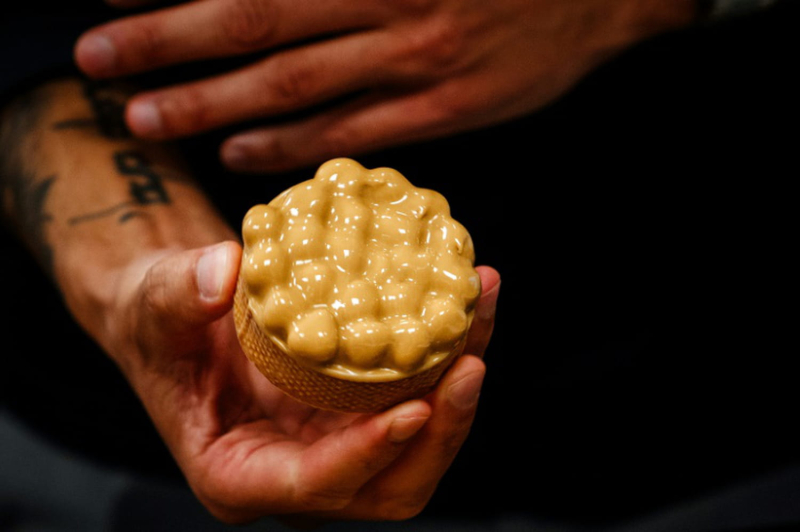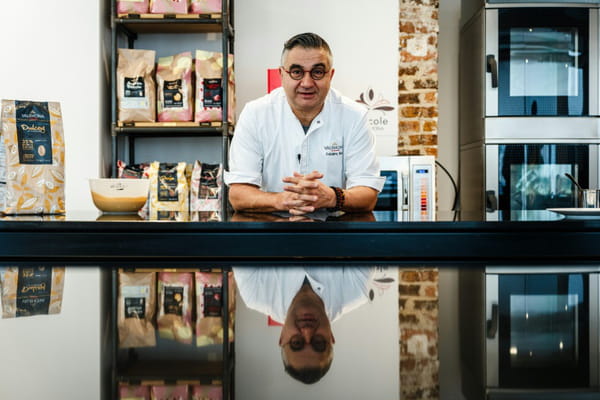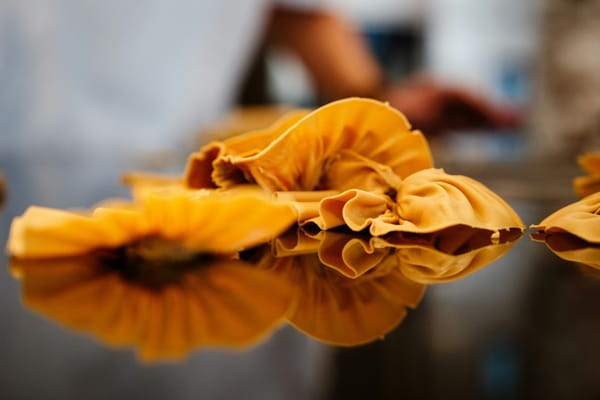A fourth color of chocolate, “blond”, with a very caramelized taste, was born in France in 2012. ;nbsp;and spread among pastry chefs without having any chance of being legally recognized, even though the Swiss also claim a similar invention, this time "pink". As with the Tatin sisters' tart, this chocolate was born from a chef's accident, that of Frédéric Bau, in demonstration in Japan, who left white chocolate a little too long in the bain-marie … four days. “As by chance, as by enchantment, because stored in an improbable place, well it became blond. I saw this chocolate with an incredible color and smell,” recalls the chef, creative director from the Valrhona chocolatier. “But this chocolate is like me, it's a mistake!”, jokes the pastry chef-chocolatier who smelled the commercial potential of this happy blunder. It will take 7 years of testing to establish the unique aromatic qualities and consistency of blond chocolate. If the recipe, filed by the Drôme giant of chocolate for professionals, has remained secret, it is based on a chemical reaction well known in cooking: the “Maillard reaction “, a sequence of chemical reactions which results in a browning of the material and aromas that we call “cooking”, close to toasted. – “Very biscuity” – To taste, blond chocolate has the milkiness and fat of white chocolate but much less sweet, the flavor of a very soft caramel revived at the end with an aftertaste of roasted coffee. The pastry chef of the Valrhona chocolate factory Frédéric Bau in Paris, March 1, 2024 © AFP – Dimitar DILKOFF Blonde chocolate is to white chocolate what dulce de leche (milk jam) is to sweetened condensed milk and its marketing name “Dulcey” plays on the analogy. For pastry chefs who generally snub white chocolate, associated with the guilty indulgence of the industrial tablet of childhood, blond chocolate opens a new playground. “It is very different in taste from other chocolates, it gives a very biscuity, very delicious taste”, explains Nice pastry chef Philippe Tayac to AFP, who combines it with hazelnut for a tartlet. Frédéric Bau combines it as a pure fondant dessert with freshly roasted apples in the oven and a Tahitian vanilla cream but also recommends “breaking it up” with more distinct fruity combinations, such as citrus or red fruit. – Trial – Despite the steps taken by Valrhona, the blond chocolate did not obtain a return in the 1976 decree which regulates the sale of chocolate in France, i.e. a minimum content of 35% cocoa which is available in levels according to the historical “three colors”, according to the text consulted by AFP. A “blond” chocolate, prepared by the pastry chef of the Valrhona chocolate factory Frédéric Bau, in Paris on March 1, 2024 © AFP – Dimitar DILKOFF Legally, blond chocolate, now imitated and also produced by Belgian and Swiss chocolatiers, therefore remains a white chocolate, the last color recognized after its invention in the 1930s in Switzerland by Nestlé.< /p> And on the other side of the Alps, a tasty marketing duel between chocolate giants is underway around this promising fourth color. Direct competitor of Valrhona, the giant Barry Callebaut has thus introduced with major marketing campaigns since 2017 its own “fourth color” also 100% natural chocolate, this time This one is pink and called “Ruby”. It comes from beans with particular properties in color and taste. “The best chocolate in the world is the one that gives you a moment of indulgence, no matter where it was produced and whatever color it is”, replied to AFP the management of the Swiss group questioned about the transalpine war for the fourth chocolate. The world of European chocolate is regularly shaken by unusual international trials with high repercussions, whether it is Nestlé's battle in the British courts over the purple packaging color of American Cadburys or its trial, lost in 2017, over the shape of its Kit Kats. All rights of reproduction and representation reserved. © (2024) Agence France-Presse



